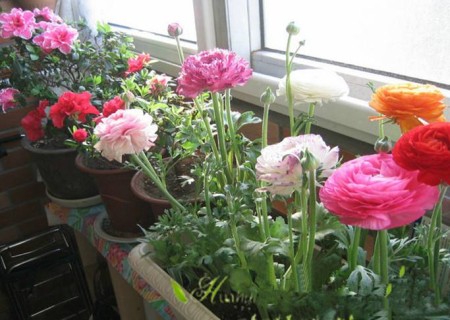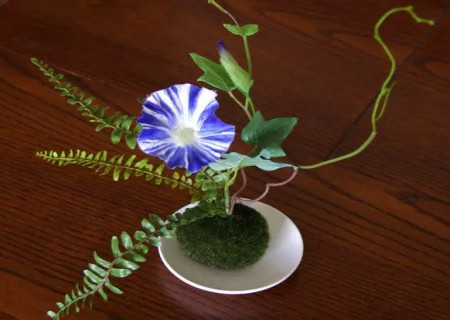Bergamot belongs to the variety with small annual consumption, the market attention is not high, the market drug dosage is not large, the supply has been sufficient, and the price has been depressed, but recently it is not calm, and the market has increased rapidly and obviously. Potted bergamot naturally attracted the attention of many businesses.
Bergamot is the fruit of small evergreen trees of Rutaceae. When the fruit is ripe, the top will split into fingers, such as the Buddha's open hand, hence the name. Bergamot has the characteristics of both medicine and food. The time and area where you can see fresh bergamot is limited, especially Jinhua's "Golden bergamot" is the most famous. There is no fresh bergamot in the north, dry bergamot can be used.
The propagation methods of potted bergamot include connection method, cutting method, air pressing method, cutting method and so on. The following is for everyone to explain one by one.
1. Scalp bonding method
In the first year, the Chinese tangerine seedlings sown with 10-15 cm soil balls were transplanted to the pot cover, and the stem was truncated when the stem was 30 cm high after survival, so as to promote the stem to grow thick and serve as a rootstock. The connection will be carried out from June to July of the following year. Cut off the trunk 10-15 cm from the ground plane, place the rootstock near the mother plant in a suitable place, and use a cutter to tilt slightly outward on both sides near the cutting mouth of the rootstock, one long and one short, with a long edge of 3 cm and a short edge of 2 cm. Then carve a plane of the scion with slightly xylem from the bottom up, and cut back a knife to remove the xylem, remember not to cut through the upper layer of the cutting, the cutting length should be longer than the cutting of the rootstock, and it is appropriate to cover the short cutting of the rootstock. After aligning the forming layer of the two, wrap it tightly with hemp skin and wrap it with a layer of plastic film to keep warm and moisturizing. It can be healed after 30-40 days, then cut off from the mother plant, put it in the shade for 1 week, pay attention to proper watering.
2. Splicing method
The cut-off time is appropriate from Qingming Festival to Grain Rain. Use Chinese tangerine as rootstock. Cut off the trunk of the rootstock 5 cm off the ground, cut from top to bottom at 1x3 of the trunk, with xylem, and the knife edge is 3 cm long, then cut one knife obliquely on each side of the lower end of the scion, showing a wedge, insert it into the cut rootstock, leave two buds at the upper end, aim at the cambium, wrap it with hemp skin, and seal the interface with wet mud. Finally, seal the scion with wet soil, which can take root and sprout. When the grafted seedling is 30 cm high, it will dry at the beginning. Put the seedlings on the pot in August and leave them in a cool place for 3-5 days.
3. The method of cutting one plant and two seedlings by grafting
First rely on the grafting (the method is the same as before, after survival, do not cut off from the joint, but keep the scion down from the joint about 12 cm long, cut off the mother plant, and casually insert the lower end of the scion into the basin, compacting the soil and pouring water. After the normal management, when the root is well developed, and then cut off from the lower end of the joint, we can get a leaning seedling and a cutting seedling.
4. Air scrubbing method
Select the exuberantly growing branches or the branches that have settled the fruit, cut them from the bottom up to the pulp, put the scratched branches into the felt, fasten the lower part, fill the tube with soil, fasten the upper part, and set up a pillar. Water it every day. When the temperature is high and the water is sufficient, it can take root in 20-30 days. The air temperature is high from May to July, which is the suitable time for air striping. If there is bergamot fruit on the pressed branch, it must wait for the fruit to mature yellow for about 90 days before it can be cut off from the mother plant.
5. Insertion method
The best cutting time is from May to June. Select branches with full tissue, good growth and disease-free insects, cut 12 cm long and have 3-4 buds. The cutting depth is 7-8 cm, showing two buds. After the soil is compacted, it is watered thoroughly. Set up a shade shed during the day, remove it at night, or cover it with branches and leaves weeds, water it every day during drought, and take root in about a month. After the cuttage survived, the cuttings were watered once every 7-10 days. Frosts Descent moved into the basin before, and the human room overwintered.
The propagation of bergamot is mainly by cutting. The time of cutting varies from place to place, but it is always at the time of bud germination. The lower reaches of the Yangtze River is in April-June, Sichuan and Guangdong are in March-April or July-September, and North China is around the Beginning of Summer. Cuttings do not use long branches, select the first year strong spring or autumn shoots, cut off the middle, about 20-25 cm long as cuttings, with 3-5 buds, cut off leaves, leave petioles, straight into the seedbed. The depth of the person is about half of the golden length of the cuttings. Keep it moist after insertion, build a shed for shade in summer and cover with grass and soil in winter. After 9-10 months, the seedling height can be about 30 cm, and Ching Ming Festival planted it the following year.
Time: 2019-06-10 Click:
- Prev

When to sow Buttercup-the sowing method of potted Buttercup
Buttercup is also called celery flower. Any flower friend likes to order vegetables before the flowers bloom, but this guy doesn't have to pretend to be like a vegetable. Anyway, don't worry about the buttercup raised in the terrace before it blossoms. Mother-in-law kept saying, there is nothing to grow such a big pot of celery. I almost didn't get cashew nuts! It is a flower in cold season.
- Next

The reproductive mode of bryophytes
Bryophytes are primitive higher plants in the plant kingdom, and they play an amphibious role in the plant kingdom. They are generally suitable for shady and humid environment, have unique color, fine texture, grow fast and are not easily disturbed by diseases and insect pests, and are also rich in variation in growth posture and color.
Related
- Fuxing push coffee new agricultural production and marketing class: lack of small-scale processing plants
- Jujube rice field leisure farm deep ploughing Yilan for five years to create a space for organic food and play
- Nongyu Farm-A trial of organic papaya for brave women with advanced technology
- Four points for attention in the prevention and control of diseases and insect pests of edible fungi
- How to add nutrient solution to Edible Fungi
- Is there any good way to control edible fungus mites?
- Open Inoculation Technology of Edible Fungi
- Is there any clever way to use fertilizer for edible fungus in winter?
- What agents are used to kill the pathogens of edible fungi in the mushroom shed?
- Rapid drying of Edible Fungi

